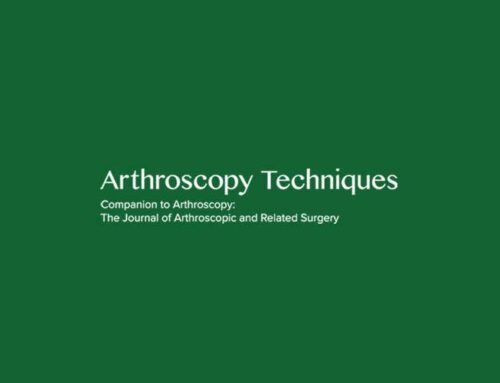Authors
McCormick F, Nwachukwu BU, Solomon D, Dewing C, Golijanin P, Gross DJ, Provencher MT
Abstract
BACKGROUND:
The incidence and arthroscopic treatment of superior labral anterior posterior (SLAP) tears have increased over the past decade. Recent evidence has identified factors associated with poor outcomes, including age, overhead activity, and concomitant rotator cuff tears. Biceps tenodesis has also been suggested as an alternative treatment to repair. Moreover, there are no studies demonstrating effective treatment strategies for failed type II SLAP repairs.
PURPOSE:
To prospectively evaluate the surgical outcomes of biceps tenodesis for patients who undergo elected revision surgery after an arthroscopically repaired type II SLAP tear.
STUDY DESIGN:
Case series; Level of evidence, 4.
METHODS:
After institutional review board approval, 46 patients who met failure criteria for an arthroscopically repaired type II SLAP tear elected to undergo open subpectoral tenodesis by 2 fellowship-trained surgeons from 2006 to 2010 at a tertiary care military treatment facility. Objective outcomes were preoperative and postoperative assessments with the American Shoulder and Elbow Surgeons (ASES), Single Assessment Numeric Evaluation (SANE), and Western Ontario Shoulder Instability Index (WOSI) scores and an independent physical examination. Statistical analysis was performed via analysis of variance.
RESULTS:
Of the 46 patients, 42 completed the study (91% follow-up rate). The mean age of the patients was 39.2 years, 85% were male, and the mean follow-up period was 3.5 years (range, 2.0-6.0 years). The rate of return to active duty and sports was 81%. There was a clinically and statistically significant improvement across all outcome assessments after revision surgery (preoperative mean scores: ASES = 68, SANE = 64, WOSI = 65; postoperative mean scores: ASES = 89, SANE = 84, WOSI = 81) (P < .0001) and shoulder range of motion (preoperative mean values: forward flexion = 135°, abduction = 125°; postoperative mean values: forward flexion = 155°, abduction = 155°) (P < .0001). There was 1 case of transient musculocutaneous nerve neurapraxia.
CONCLUSION:
Biceps tenodesis is a predictable, safe, and effective treatment for failed arthroscopic SLAP tears at a minimum 2-year follow-up. The majority of patients obtained good to excellent outcomes using validated measures with a significant improvement in range of motion.



